I often begin the styling process by considering how well the branches complement the trunk. On the Korean hornbeam below, a slender trunk supports a relatively full silhouette.
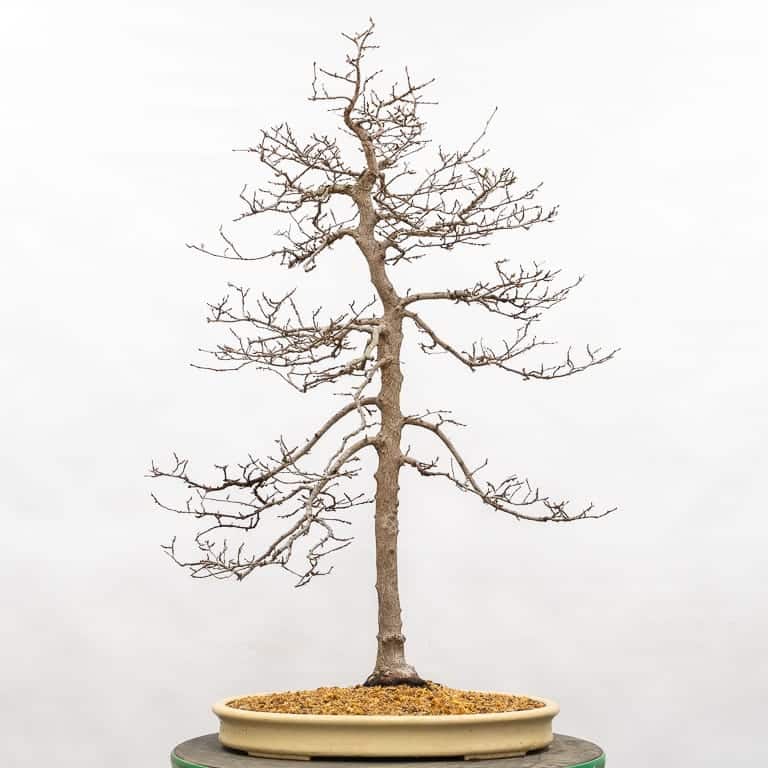
Korean hornbeam
Full silhouettes make sense to me on trees with more substantial trunks. This got me thinking about opportunities to improve the branch structure by reducing the number of branches.
The lowest branches emerge from the left and right sides of the trunk but not from the front or back. This gives the tree a two-dimensional appearance that’s exacerbated by the similar branch angles.
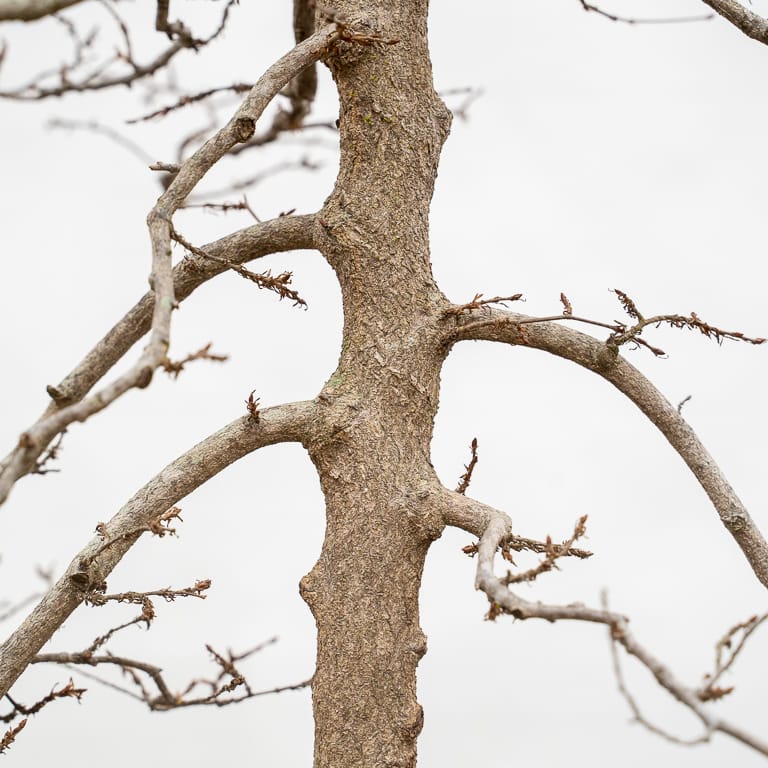
Alternating branches on the lower trunk
I talked about which branches to keep or cut with Daisaku Nomoto, a Japanese bonsai professional who visits the U.S. most Januaries. He too wanted to make some cuts so he removed three of the four lowest branches.
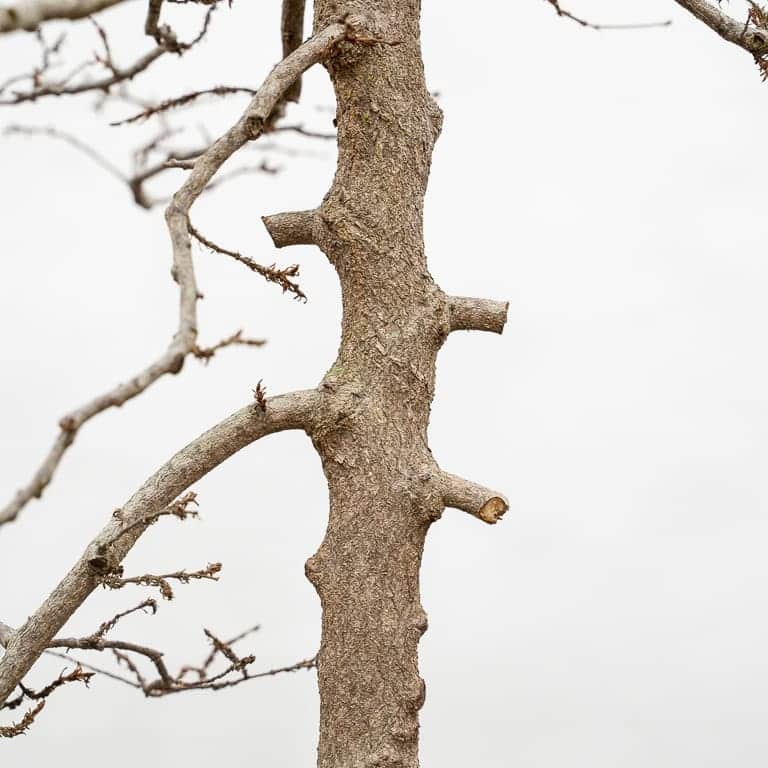
After removing three of the four lowest branches
The middle of the trunk presented a similar situation. Because the branches here grew so close to each other, they produced swelling along the trunk that led to a pronounced drop in taper. It was a perfect spot to make additional cuts.
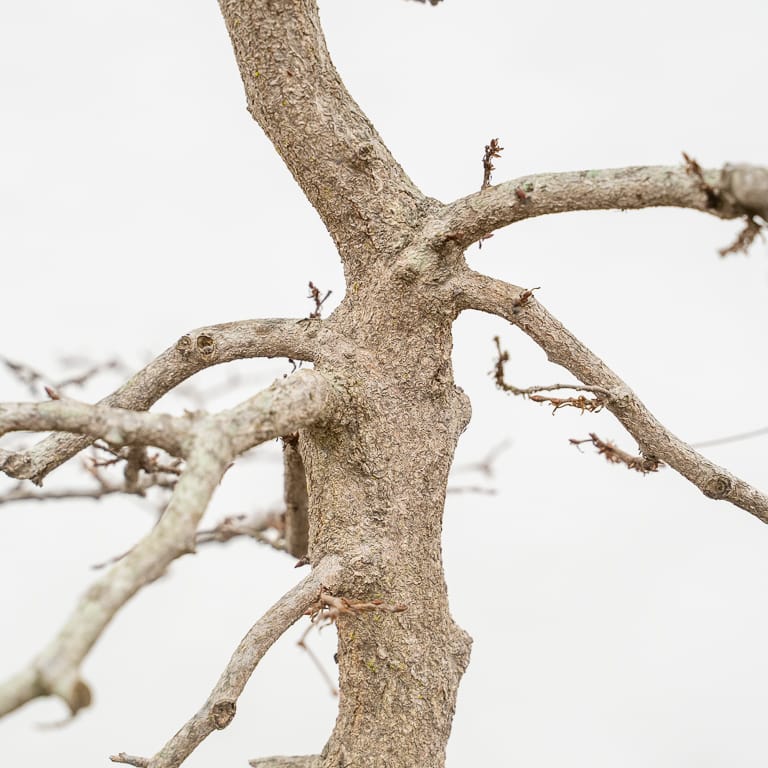
Crowded branches on the middle section of the trunk
Here’s the tree after thinning branches in these two crowded areas.
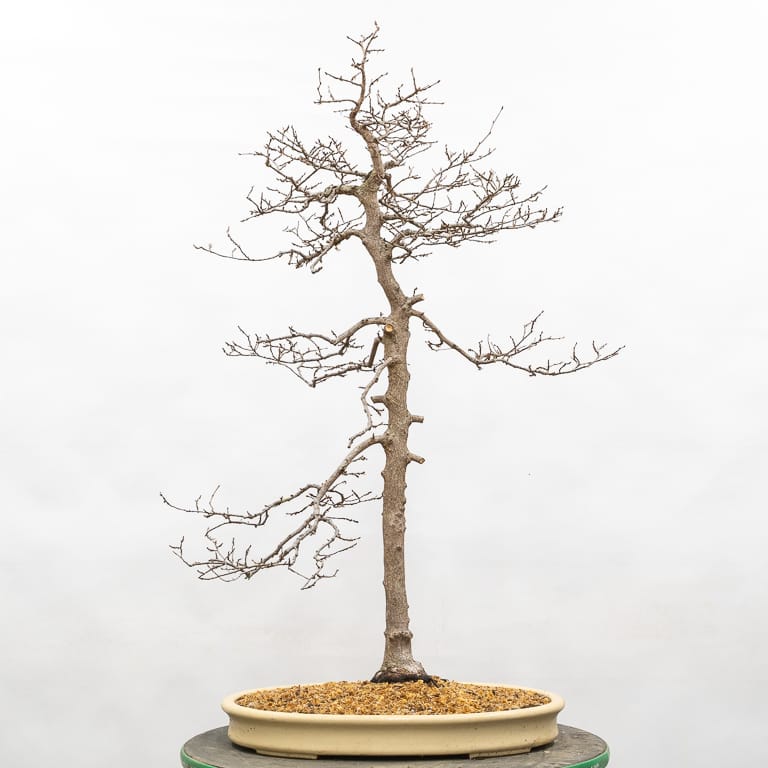
After cutback
We thought a few wires would improve the look of the tree but held off on additional wiring or pruning so the tree could regain vigor after being bare-rooted the week before.
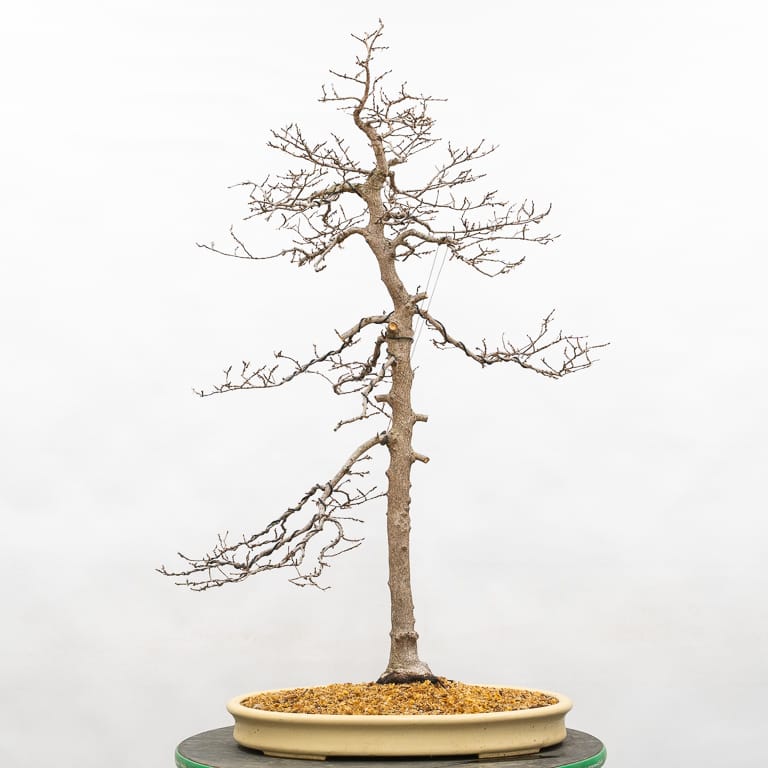
After wiring – 37″
I think the present silhouette suggests a much older tree and that the gaps between branches makes sense given the slender trunk.
Going forward, the plan is to let the tree grow freely in spring to let new roots get established before switching the focus to improving the branch density.
California Shohin Seminar on Now!
The biennial California Shohin Seminar is off and running in Santa Nella, California. The event runs today through Sunday at noon.
The seminar is among the top shohin-themed events in the country. Visitors come for the Friday demos, the Saturday workshops, and the Sunday presentations.
I’ll be leading a workshop on satsuki azaleas Saturday afternoon and presenting on shohin development Sunday morning. I hope to see you there!
Learn more at the 2020 Shohin Seminar website.
Subscribe to Bonsai Tonight
New Posts Delivered Every Tuesday and Friday
Scott Alan White says
Jonas, why leave a small stump on each branch cut?
Jonas Dupuich says
Hi Scott! Good question – I’m waiting until the tree starts growing before I cut back further. If I cut back now, it’ll be a while before callus begins to form which may lead the wound to heal more slowly. I plan to remove the stubs in spring.
John DeMaegd says
Is there a reason you left the stubs instead of cutting them concave? or was it for visibility in the photos for the blog?
Jonas Dupuich says
Hi John! Leaving the stubs lets the sap withdraw down to the level where I want the callus to form. If I cut lower now, the sap may withdraw further making it harder to create callus where I want it to form.
Jef Porto-Carrero says
In the middle section, aren’t those opposing branches a problem?
Jonas Dupuich says
Great question – the branches in the mniddle aren’t ideal, but removing them would leave the tree without a back branch or without a side branch. I also want to keep extra branches for the time being while the tree regains vigor (I just bare-rooted it). I’ll consider removing another branch in this area down the road.
Robert Potts says
An elegant tree, but the silhouette/apex seems a bit more pointy/triangular than I would expect for a deciduous tree. That is a temporary situation, I assume?
Jonas Dupuich says
That’s right, the shape of the apex is temporary. I did no general cutback on the tree beyond removing the extra branches. I’ll look to work on the branch structure once the tree is rooted in.
Ondrej says
Hi Jonas, very elegant tree, but personally I do not like branches which initially grows upward and then they falling down. It makes ugly curve on them, I think it is not aesthetic. But, true is, you’ve cut back almost all of them,so it is good. I hope you will undestand to my terrible english, thank you.
Jonas Dupuich says
Thanks Ondrej – I don’t like the initial curves on these branches either. I hope they take on more character over time.